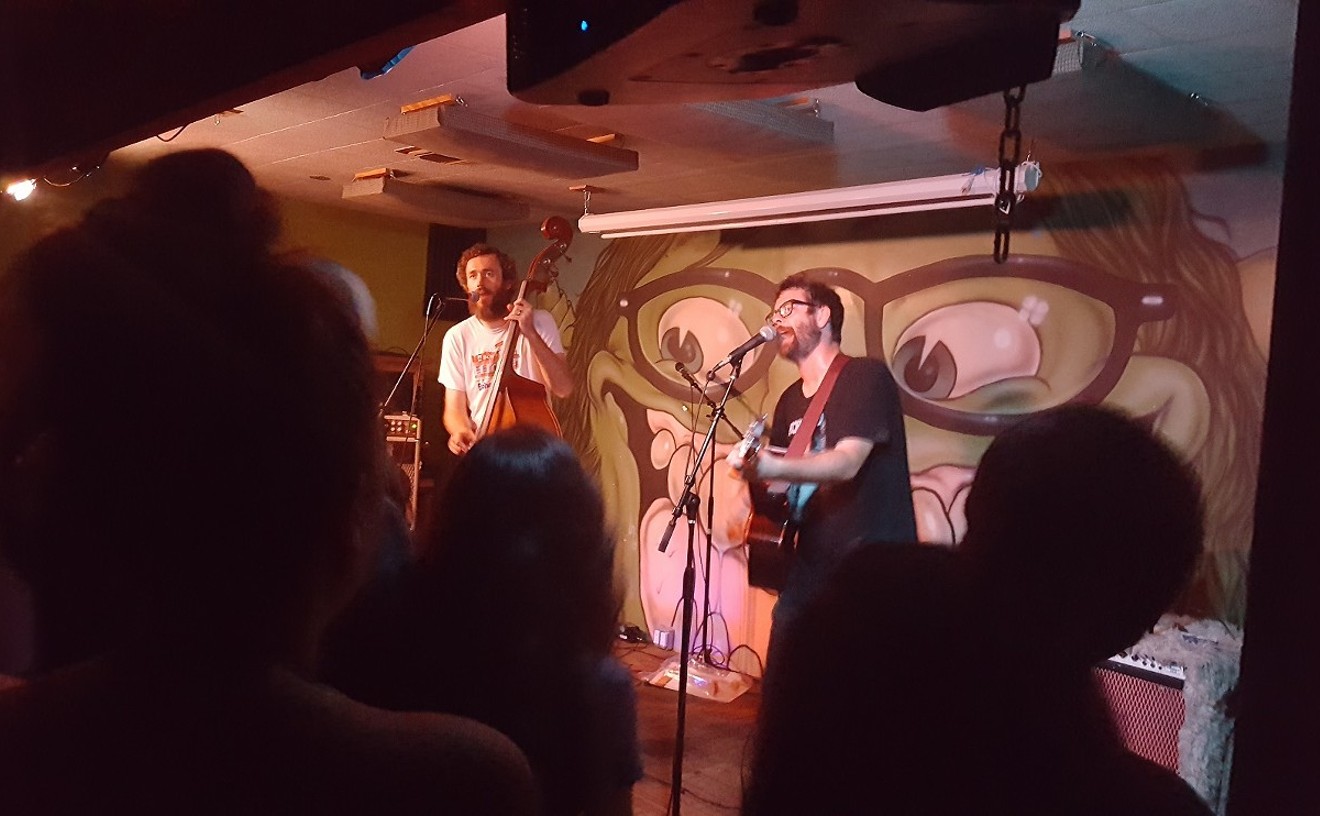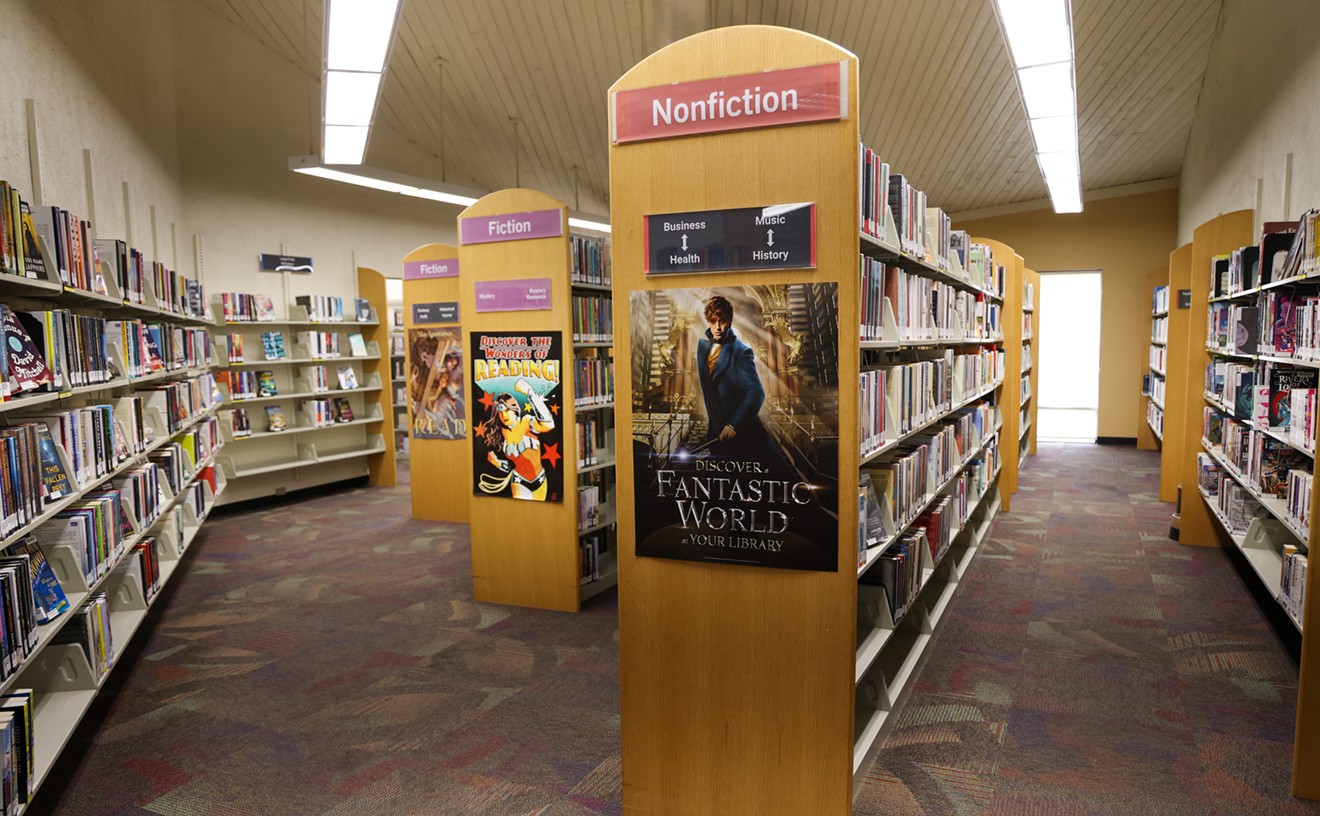And it's blanketing the north and west walls of the ASU Ceramic Research Center, the focal point of ceramist Susan Beiner's show, "Synthetic Reality." The rest of the one-room gallery includes more fantastic organic life with stand-alone works and mini-installations of floor sculptures. Though every piece is absolutely stunning, the show could have been better. The solitary art pieces and the gallery's spaciousness busted my stream of imagination. It was like watching a scratched DVD. As soon as I'm living the story, the damn thing stutters and blips, and then I realize I'm really just sitting on my couch.
Beiner, a faculty member of the ceramics department at ASU's Herberger College School of Art, spent two years — and two tons of material — working on this show. The volume alone is impressive.
The aforementioned landscape affixed to the wall is certainly the visual climax. In it, a series of cast ceramic shapes (each about the size of a pillow) fit together like a jigsaw puzzle. Every piece is unique, smothered with writhing plant life. It's an extraordinary wilderness that towers and beckons. I wanted to touch and explore, but the plants' sharp points and bright colors warned me away. The bolts and bits of industry show Beiner's primary concern. She imagines a world in which organic life has been genetically spliced, hybridized and manipulated to a point at which they are unrecognizable in our present-day botany. She succeeds — the walls are a gigantic petri dish run amok.
Beiner aims to suck her viewers into this world, and to that end, the wall installation is powerful. But with so much space in the remainder of the gallery, it was too easy to run away. It didn't overpower me.
That said, the pieces themselves are truly superb. As you stroll through the gallery, clusters of huge stems erupt from the floor. The plant bases are translucent cream-colored hemispheres that gobble surrounding light and glow like lampshades. Sprouting from the slick, man-made bulbs are sinewy stalks that bend and twist toward the sky. The stems are peach and pink with bursts of thick leaves huddling together. The glistening ceramic creates a cold atmosphere, but the blooming flowers are made from thick, rubbery fabric that warms things up. These floor clusters pop up throughout the gallery in corners and against walls.
Unlike the frenzied clusters on the floor and the wall, Beiner's smaller, solitary sculptures, shown in the middle of the gallery on a freestanding pedestal, a wall partition, and along the remaining walls are proper art pieces — sterile and detached with labels. One sculpture, Probe, is a bright pink blob, splat on the side of a wall. From the center emerges a group of blue stems with a few crimson berries. There are no screws or wing nuts here; it's completely organic. I imagine that in Beiner's world, this is a highly evolved plant cut from nature and then genetically spliced to produce the thicket on the other wall.
I found myself wishing I could ditch the solitary works, take the large wall piece and the floor clusters and cram them into a gallery half the size. Then I would be completely dominated, overwhelmed, and lost in Beiner's futuristic weirdo jungle. I'd have to watch my step and hold my purse close, for fear of touching the invasive plants. Instead, with all the room to roam, I was constantly aware of my feet on the gallery floor and the Mill Avenue traffic whizzing by the windows.
To be honest, the experience was painful. Beiner's incredible work was so close to whisking me away to the land of her imagination, but I just couldn't get there.










